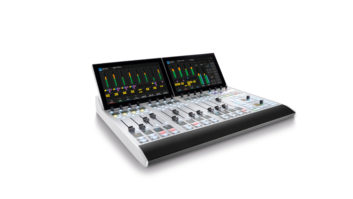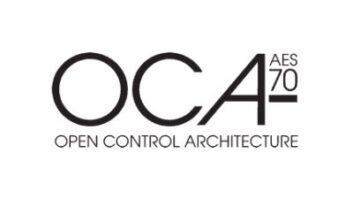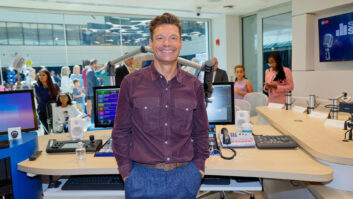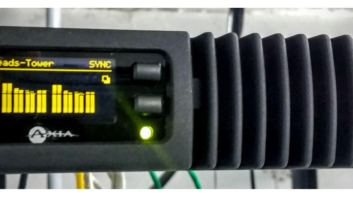A massive transformation in radio’s technical infrastructure is underway replacing the analog infrastructure with next-generation digital systems. What’s the word from the front lines as engineers implement this change?
At Cumulus Broadcasting, the future of IP-based audio is about to arrive; Axia nodes have recently been ordered for about 100 stations operating in 20 markets.
“We’re preparing for the future by adding IP technology into our infrastructure in a major way,” said Gary Kline, Cumulus vice president of engineering and IT. “We’re also eliminating sound cards by formalizing our IP driver policy.”
The decision to opt for driver-based IP systems instead of the longstanding soundcard-based systems came after careful consideration.
“We decided to take the company down a different path than the traditional way of doing things. IP audio technology has been at how many NAB shows? We weren’t going to go in on this technology on Day One, but we’ve been watching closely since then,” said Kline.
Numerous Cumulus stations have implemented the new IP-based infrastructure, and this broad-based rollout will continue through 2008.
A NEW ERA
At Boston’s WGBH, the big NPR station has just come through a total revamp of production and broadcast facilities after 36 years at the same location. The new end-to-end digital plant employing the Tomorrow Radio model for HD transmission also embraces IP-based audio and features Wheatstone consoles and router systems.
(click thumbnail)John VociIP-based systems “have the obvious advantage of tremendous flexibility as it enables any studio, control room or device to be accessible throughout the facility. From an installation perspective, it also has tremendous advantages,” said John Voci, director of radio stations for WGBH Radio Boston.
In the aftermath of the installation, WGBH engineer Jon Frank offers some hints for others getting set for a total makeover.
“The most important lesson we learned is that you cannot overbuild. There were some tie lines that were installed even though we were told that they would never be needed. As it turned out, we needed them, and used them,” said Frank. “It is far less expensive to build the biggest plant you can while doing your initial construction than to add it later on. So max out on router inputs and outputs, and load up on distribution amps. You’ll end up using them.”
At Greater Media Philadelphia, construction of a new broadcast facility for five stations is also utilizing an IP-based audio infrastructure to tie together 40,000 square feet spanning opposite sides of a large office building on four floors. Connecting to a centralized audio server through this geography would typically be a costly challenge.
“It would have meant running large numbers of expensive multipair audio and GPIO snake cables long distances through the building,” said Larry Paulausky, chief engineer of the cluster. “Using an ‘audio-over-Ethernet’ architecture allows these runs to be delivered over much easier-to-install fiber-optic cable, a solution that by its nature provides a great deal of flexibility for rearrangement, as well as significant room for growth.”
FOLLOWING DIRECTIONS
At Washington State University, Northwest Public Radio’s FM HD installation is the culmination of a total digital makeover that began early in the decade.
Upgrades include Klotz audio consoles with an integrated digital routing switcher purchased in 2001. More recently, a mix of BE and Nautel transmitters finished the job. Chief Telecommunications Engineer Dave Brawdy says you need to keep a close watch to navigate such change to new technology.
“There seems to be differing opinions, even within the same manufacturer staff, as to how their equipment should be interconnected,” said Brawdy.
This became clear while replacing seven analog transmitters with the new HD units.
“While planning the installations I reviewed the manufacturer-provided documentation and created a site equipment interconnection diagram for our installation staff. I sent this diagram to one manufacturer’s service department for review and they suggested some changes, which I incorporated. After the equipment was installed, the manufacturer’s field service tech made more changes to the wiring when he arrived at the site to commission the transmitter,” Brawdy said.
MANAGING CHANGE
The convergence of broadcast engineering and IT has altered the landscape so that basic concepts and rule-of-thumb knowledge of veteran engineers have to be rethought.
At Utah Public Radio, Chief Engineer Friend Weller says that the geography has shifted so that tried-and-true terms like “transmitter room” are now antiquated.
“We still call it the transmitter room, but it is so much more a centralized computer/server/router room than ever before,” said Weller.
This has major implications in basic specs.
“We have to provide less for wiring in each studio as we have to plan and install more cabling between the studios and our main rack room. This, along with the installation of HD transmission equipment, has resulted in a need for more air conditioning and more power conditioning in that area and less and less environmental conditioning in each of the control rooms and studios,” Weller said.
However advantageous a technical advance may be, getting buy-in from staff, who are comfortable with the existing setup, is part of the installation process. Control surfaces for audio routers can emulate legacy mixers, easing the transition. Weller is being careful to figure in the human factor as the digital changeover, including IP-audio routing, goes forward.
“Teaching staff that the new consoles may look like audio mixers, but are, in reality, complex audio routers — especially the concept of every source being able to be controlled from any room — may seem like a simple concept to teach, but in practice it’s proved to be a bit of a hurdle. They don’t need to know how the watch was made, but they do need to know how to tell the time.
“In a few weeks, the way we tell the time will be a bit different than what they have been used to.”













